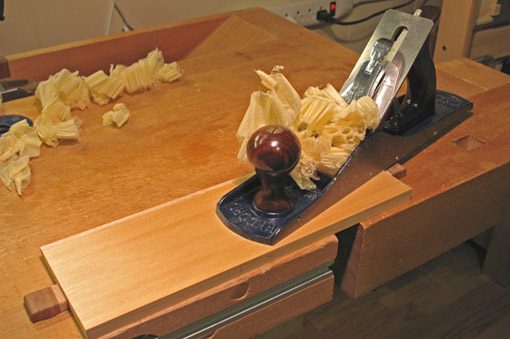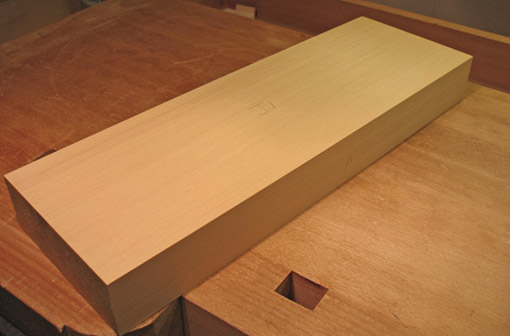It seems I’m always a bit flummoxed at the adjustments in technique required when working an unfamiliar species of wood. I suppose I should be used to it by now, woodworking is so tactile and good results very much depend on the nuances of the tool meeting the wood surface and realizing how a particular wood is responding. However, sound skills carry through varying circumstances.
That aside, Port Orford cedar is fun to work and I recommend it. I obtained thick, clear, straight-grained, old growth stock, which I resawed, from Northwest Timber , Oregon, who expertly process salvaged logs. The quartersawn surface has a meditative, simple beauty. The shop is filled with its strong, spicy fragrance.
Port Orford cedar is a light wood which responds extremely well to a sharp hand plane. Its tangential and radial shrinkage figures are a relatively stable 6.9 and 4.6, respectively, with a low 1.5 T/R. That it is a soft wood does not imply it is entirely easy to work with, since it shows mistakes and crushes easily. I find low density woods (not necessarily softwood species) in some ways more problematic than friendly walnut or cherry. However, adapt your techniques and all should go well.
Forest Products Laboratory has good information on Port Orford Cedar.




You can use newer growth stuff – stuff that doesn’t have as fine a grain – for drawer bottoms in dressers and other pieces that you want a nice fragrance to. Not the material for kitchen drawers….but dressers and built-in closets work out well.
Thanks, Tim. POC sure is a very nice wood, though I wish it had a little more surface hardness.
Rob